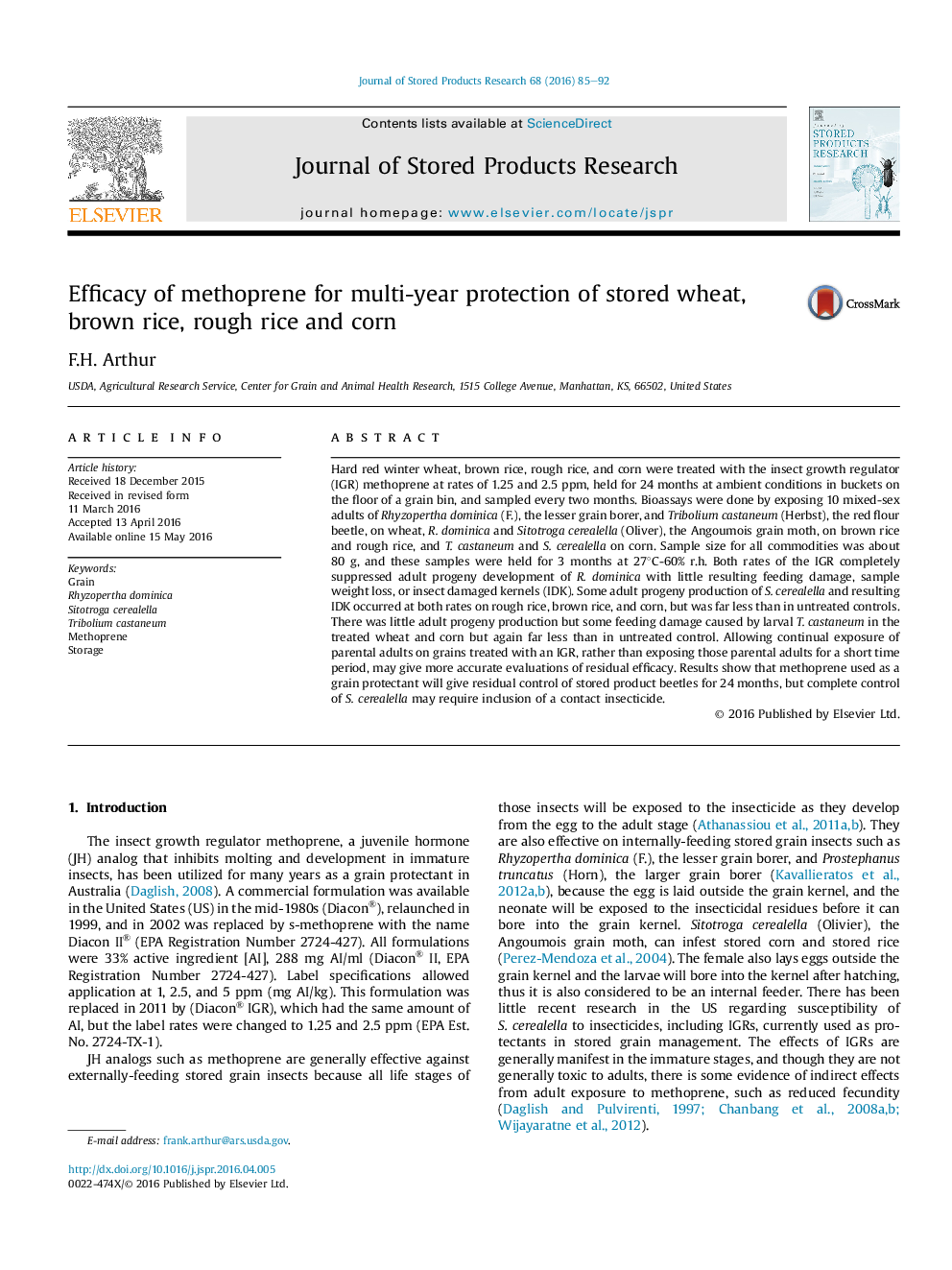| Article ID | Journal | Published Year | Pages | File Type |
|---|---|---|---|---|
| 4516931 | Journal of Stored Products Research | 2016 | 8 Pages |
•Methoprene completely suppressed progeny production of Rhyzopertha dominica and Tribolium castaneum on all commodities for two years.•There was some progeny production and feeding damage from Sitoroga cerealella in the methoprene treatments.•Feeding damage and insect damaged kernels of Rhyzopertha dominica and Sitoroga cerealella was correlated with progeny production.
Hard red winter wheat, brown rice, rough rice, and corn were treated with the insect growth regulator (IGR) methoprene at rates of 1.25 and 2.5 ppm, held for 24 months at ambient conditions in buckets on the floor of a grain bin, and sampled every two months. Bioassays were done by exposing 10 mixed-sex adults of Rhyzopertha dominica (F.), the lesser grain borer, and Tribolium castaneum (Herbst), the red flour beetle, on wheat, R. dominica and Sitotroga cerealella (Oliver), the Angoumois grain moth, on brown rice and rough rice, and T. castaneum and S. cerealella on corn. Sample size for all commodities was about 80 g, and these samples were held for 3 months at 27°C-60% r.h. Both rates of the IGR completely suppressed adult progeny development of R. dominica with little resulting feeding damage, sample weight loss, or insect damaged kernels (IDK). Some adult progeny production of S. cerealella and resulting IDK occurred at both rates on rough rice, brown rice, and corn, but was far less than in untreated controls. There was little adult progeny production but some feeding damage caused by larval T. castaneum in the treated wheat and corn but again far less than in untreated control. Allowing continual exposure of parental adults on grains treated with an IGR, rather than exposing those parental adults for a short time period, may give more accurate evaluations of residual efficacy. Results show that methoprene used as a grain protectant will give residual control of stored product beetles for 24 months, but complete control of S. cerealella may require inclusion of a contact insecticide.
